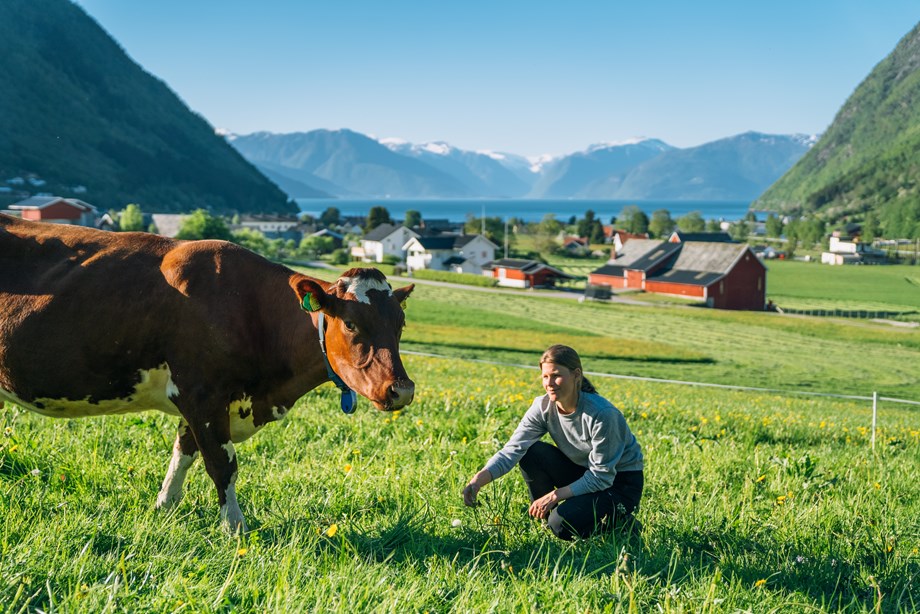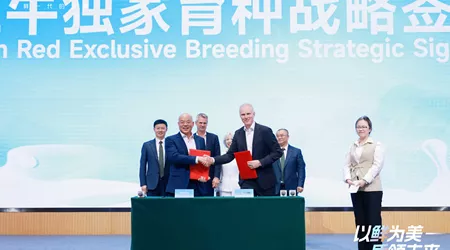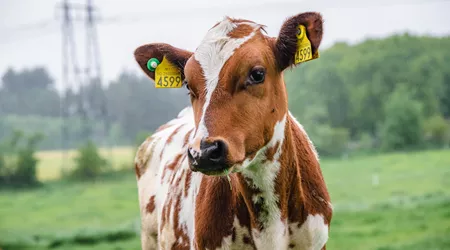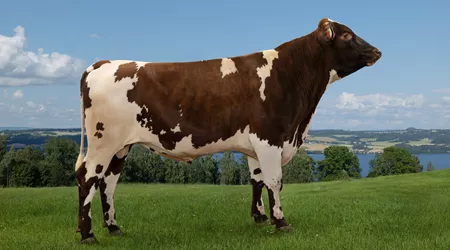Geno’s Breeding Department and R&D team will release a new revision of the Total Merit Index (TMI) for Norwegian Red, signaling changes in breeding program direction and the ranking of bulls both domestically and internationally.
“As the market continues to evolve, economic framework conditions and technologies have also evolved. And the use of sexed semen and beef-on-dairy are the perfect examples of changes impacting the industry. Based on these factors, some adjustments on breeding values make sense,” said Håvard Melbo Tajet, Chief Technology, and Innovation Officer for Geno.
Faster genetic improvement in milk solids content, functional udders, and polled frequency
The new TMI and components of the TMI will, among other things, result in higher milk solid content without compromising total milk production, provide a more durable udder, and result in faster progress in polled gene frequency. The new TMI will also halt the slight increase in live weight Norwegian Red has experienced in recent years.
Change in relative weights from the previous Total Merit Index (TMI) to the new TMI. The percentage weight indicates the relative emphasis placed on each of the indexes or traits.
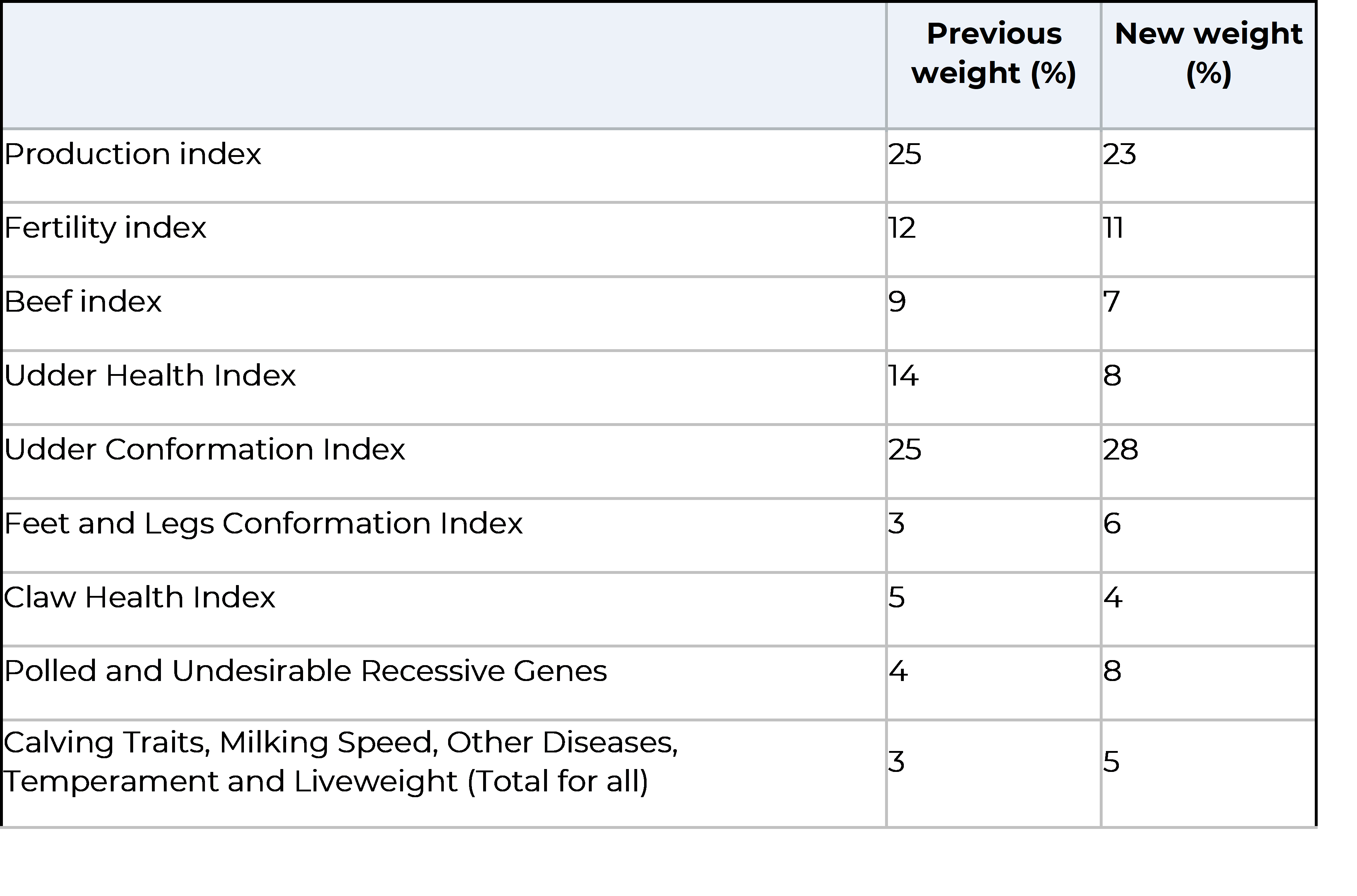
More focus on milk solids
Milk, either in terms of quantity or solid components (fat and protein), is and remains one of the main economic drivers for successful milk production. We have increased the weight on protein and fat percentages to help drive these percentages higher and total fat and protein production faster. The correlations between fat and protein percentages and fat and protein production (kg) are negative, but we have managed to strengthen the response in fat and protein percentages without slowing down the response in fat and protein production (kg).
A functional, long-lasting udder
We have seen rapid progress in improving udder type/exterior in recent years but other changes in the TMI allowed us to increase the emphasis slightly on the udder index which will drive further improvements in udder function and durability at a faster pace. Previously, we found a strong correlation between udder depth and udder function/durability, but udder depth has now been improved to such a degree that further improvement is not as critical as in the past. Therefore, we have made some changes in the overall udder index. One change involves an increased weight on fore udder attachment which also improves udder function but has a less undesirable impact on stature and cow size compared to udder depth. In addition, the new udder index provides improvement for both teat diameter/thickness and length.
Polled, casein variants and undesirable recessive genes
Polled has been directly included in the TMI for over 5 years and almost 40% of the animals born in Norway in 2022 were polled. We are now increasing the weight on polled so it will triple the response, moving us even faster towards a higher frequency of polled animals. The lethal mutations (BTA12, BTA8H, and AH1) and casein variants are also included in the new TMI thus ensuring a decline in an already low frequency of the undesirable recessive genes. The new TMI ensures the desired development in the frequency of the different casein varieties in milk (A2A2, BB, for example) as well.
Liveweight and beef value
The Norwegian Red cow has now reached the optimum size and mature liveweight following a slow increase in liveweight over recent years. Our new goal is not to breed smaller cows necessarily, but rather to maintain the cow’s current average liveweight, and continue to create more efficient cows.
Liveweight, hip height, slaughter weight, and muscling/slaughter class (in males) are interrelated, and have a negative correlation with calf size, calving difficulty, and stillbirths. The global trend towards using sexed semen on the best animals in the herd to get high-value replacements, and beef cattle on the proportion that should not be recruited for milk production continues to grow. Consequently, the new TMI has a small negative weight on mature liveweight which will ensure that Norwegian Red cows do not get larger.
Successes and changes from adjusting the TMI:
- We have succeeded in shifting the focus of the udder index from udder depth to udder attachments.
- We have succeeded in increasing the progress in milk solids without compromising milk production and thereby also strengthening the total production of protein and fat.
- We will improve most calving traits at a faster pace.
- We have tripled the response in polled frequency.
- We have ensured a decline in the frequency of lethal genes.
- We have secured increased frequency for the key casein variants.
- We have stopped further increases in liveweight for Norwegian Red cows.
